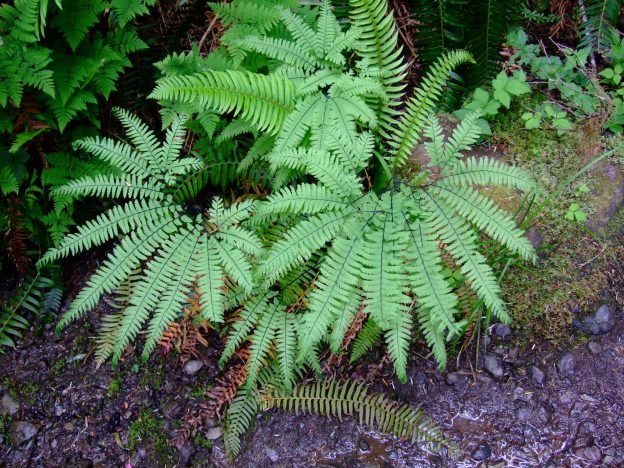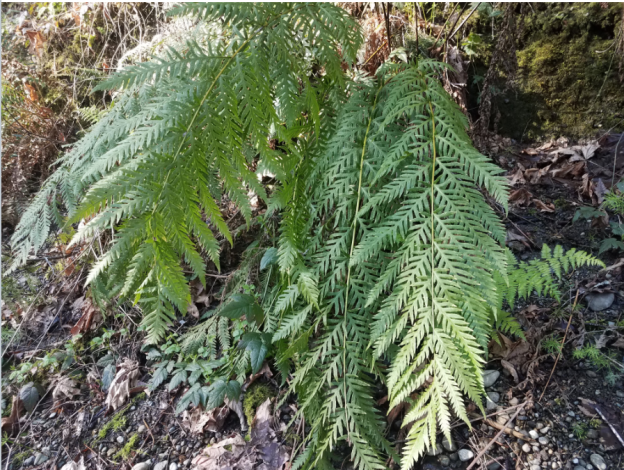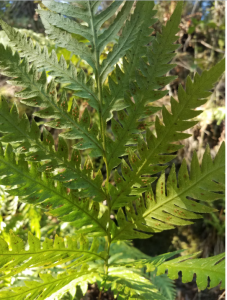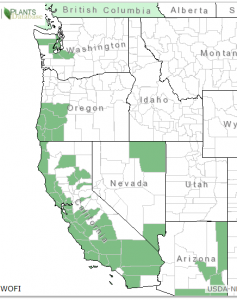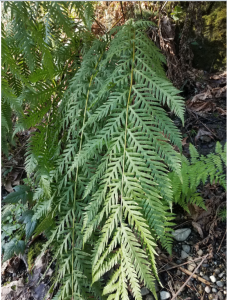Western Maidenhair Fern Maidenhair Fern family—Pteridaceae
Adiantum aleuticum (Rupr.) Paris
(a-dee-AN-tum al-oot-IH-kum)
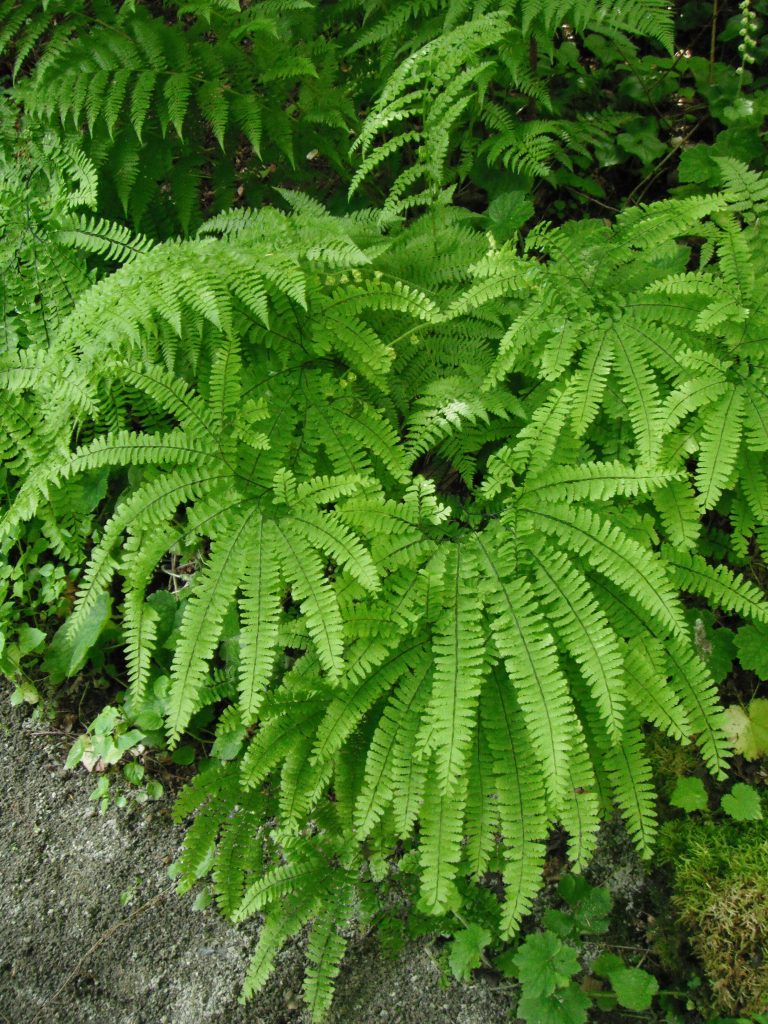 Names: Adiantum aleuticum is also known as A. pedatum var. aleuticum. Adiantum comes from the Greek, adiantos (unwetted), referring to how the leaves shed water. Aleuticum is derived from the Aleutian Islands. Pedatum means foot-like (usually a bird’s), referring to its fan-shaped fronds. Common names include: Five-finger Fern and Northern or Aleutian Maidenhair. The term Maidenhair may have been derived from the species A. capillus-veneris, (literally Venus’s hair), perhaps due to the dark, glossy hair-like leaf stalks. Ginkgo biloba is called “Maidenhair Tree” because the leaves resemble the pinnules of Maidenhair ferns.
Names: Adiantum aleuticum is also known as A. pedatum var. aleuticum. Adiantum comes from the Greek, adiantos (unwetted), referring to how the leaves shed water. Aleuticum is derived from the Aleutian Islands. Pedatum means foot-like (usually a bird’s), referring to its fan-shaped fronds. Common names include: Five-finger Fern and Northern or Aleutian Maidenhair. The term Maidenhair may have been derived from the species A. capillus-veneris, (literally Venus’s hair), perhaps due to the dark, glossy hair-like leaf stalks. Ginkgo biloba is called “Maidenhair Tree” because the leaves resemble the pinnules of Maidenhair ferns.
Relationships: There are about 200 species in Adiantum worldwide, with about 9 native to the mainland United States and Canada, and about 11 more found in Puerto Rico and the Virgin Islands. Northern Maidenhair, Adiantum pedatum, from the Eastern United States, is very similar. A key must be used to distinguish the two, — A. aleuticum sometimes has ascending or vertical pinnae, A. pedatum always are horizontal.
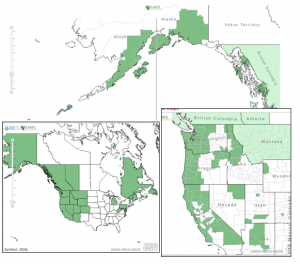
Distribution of Adiantum aleuticum from USDA Plants Database
Distribution: Western Maidenhair can be found from the Aleutian Islands and southeast Alaska to Chihuahua in Mexico. It is more common along the Pacific Coast, but can be found in some areas of the inland Rocky Mountain Region, and in some northeastern states, Quebec and Newfoundland (listed as endangered in Maine).
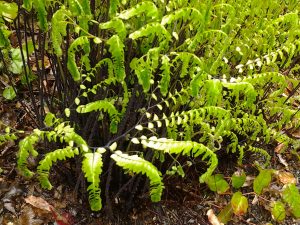
Growth: This species grows 4-30 inches (10-75 cm) tall.
Habitat: It grows in shady, moist, humid forests, or on rocks and cliffs, often within the spray zone of waterfalls.
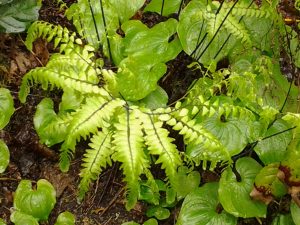
Diagnostic Characters: Western Maidenhair is a deciduous perennial with solitary (or few) fronds. It often grows in large colonies. Dark brown to purplish-black petioles divide into 2 and then divide again, spreading parallel to the ground, radially to form 6-10 “fingers.” Each leaflet or pinnule is fan-shaped but is usually skewed long on one side, creating an oblong shape. Oblong sori are found on the edges of the upper lobes of the leaflets and are covered by inrolled leaf margins (false indusia).
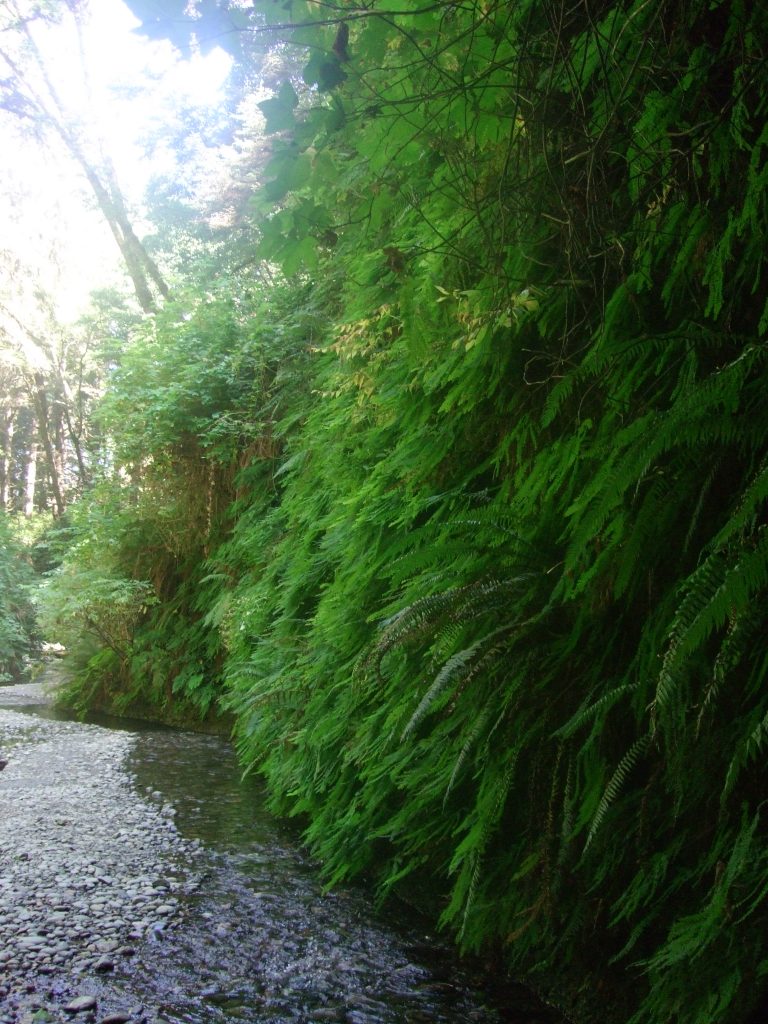 In the Landscape: Maidenhair Ferns are prized by gardeners for their delicate, airy fronds. Western Maidenhair is sure to evoke memories for avid hikers of enchanting waterfalls, where it grows on cliffs within reach of water spray. But the gardener should make sure this charmer gets planted in a shady place with plenty of moisture.
In the Landscape: Maidenhair Ferns are prized by gardeners for their delicate, airy fronds. Western Maidenhair is sure to evoke memories for avid hikers of enchanting waterfalls, where it grows on cliffs within reach of water spray. But the gardener should make sure this charmer gets planted in a shady place with plenty of moisture.
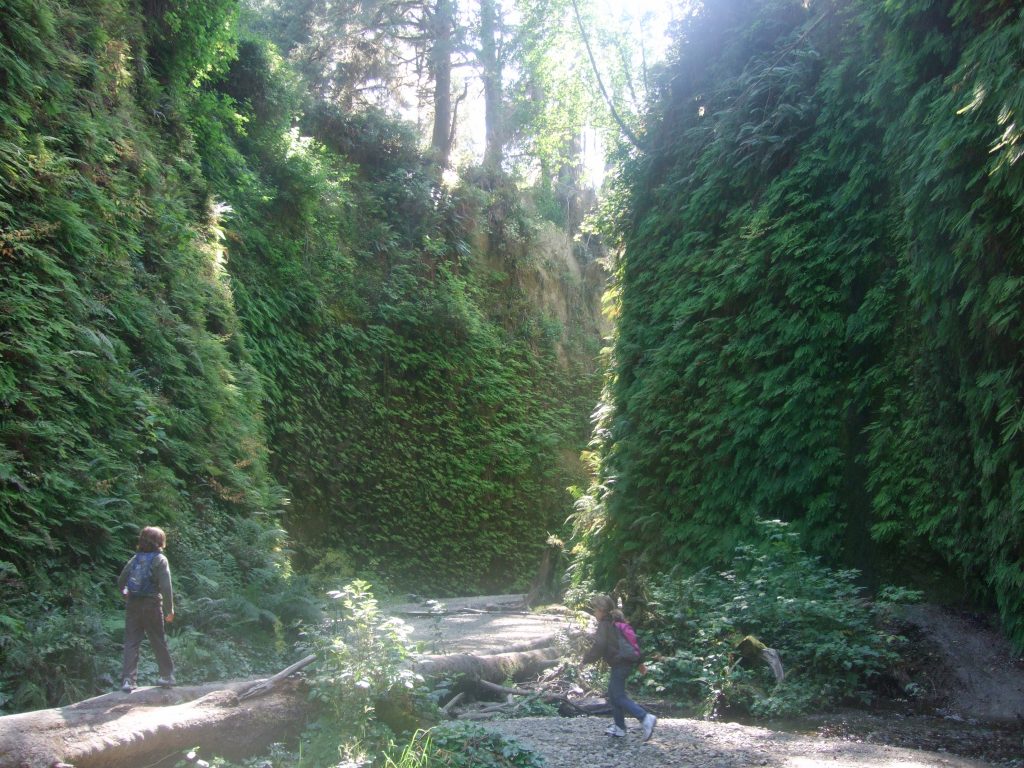
The Cliff walls in Fern Canyon in Redwood National Park are mostly covered with Maidenhair Ferns.
Use by People: Natives used the stems of Maidenhair Fern in basketry designs. They also used a tea made from the leaves as a hair wash. The Quinault burnt the leaves and rubbed ashes in their hair to make it long, shiny and black. California natives used the stems for pierced earrings, either alone or with feathers; inserting them into the ear lobe to keep the hole from closing. The leaves were also chewed for internal wounds, chest pain, or stomach trouble. Capillaire cough syrup originally made from A. capillus-veneris has also been made from A. aleuticum.
Links:
Consortium of Pacific Northwest Herbaria
WTU Herbarium Image Collection, Plants of Washington, Burke Museum
E-Flora BC, Electronic Atlas of the Flora of British Columbia
Jepson Eflora, University of California
Ladybird Johnson Wildflower Center
Native Plants Network, Propagation Protocol Database
Native American Ethnobotany, University of Michigan, Dearborn

